The Ins and Outs of Creating A Brand Name
Have you ever wondered what goes into creating a brand name? It’s not easy, but with the right combination of creativity and logic, you can come up with a brand name that is just right for your business. In this article, I’m going to guide you through the process of creating the perfect brand name. Yes, it sounds oversimplified but once you get the process down and all of the steps figured out, it will be easier to repeat for any other future businesses you put out there.
Insight from an Industry Expert
Peter Levine, general partner at the venture capital firm Anderseen Horowitz, wrote after closing Figma’s $50M investment round last, we’re entering the decade of design.
“If products and companies would live or die by code before, they now live or die by their product design and design literacy – that’s why I’m calling it the decade of design… One where design, not just code, is at the centre of product development and successful organisations. Companies like Superhuman, Zoom, and many others are changing not only who buys and deploys software but also our fundamental, table-stakes expectations for what a great product is.”
Remember 2010 Quickbooks? A decade ago, function over form was the rule, so you needed a workflow manual just to follow the user interface. But now – in the decade of design – the interface no longer reflects the code; rather the code reflects the design.
What is a brand name?
How do you summarise what you stand for and what you do in a couple of words or just one for that matter. What does it take to be remembered for decades to come?
Even the most iconic brands can go through iconic changes – their products evolve, their campaign strategies change, their advertising takes a different tone. However, there’s one brand element that embodies so much value and resonance that remains intact: a brand’s name.
What makes a good brand name?
Many people think that brand names are formed from a burst of inspiration much like they think going viral is as easy as making a cup of coffee. Nothing about the last sentence could be further from the truth. This perception is what makes naming so frustrating for business owners. Phil Knight, the co-founder of Nike, famously did not warm up to the name at first. He only went on to trademark it as he ran out of time to come up with a different name.
The reality about naming is that it’s as much about strategy and science as it is about creativity and imagination. Good names serve a specific function: it will enable your brand and your vision to be communicated, desired and remembered.
By ‘communicated’, your brand name must encapsulate your brand’s message. For example, the name Sprite channels the meaning of the root word ‘spright’ – meaning ‘full of energy’.
By ‘desired’, it must attract people and draw them in, as in the case with Lush – a short, evocative name that amalgamates bubbles and luxury.
And lastly, by ‘remembered’, it means that people will forever keep it top of mind – easy to spell and pronounce, it’s catchy.
The Different Approaches to Naming
Find the naming approach that works best for you. The first step is to pinpoint what kind of name you need for your brand. Your brand positioning and vision determine which approach is best for you. Below is a summary of the different naming approaches and how they differ from one another.
Eponymous
Eponymous names are names of real people. Nowadays, eponymous names resonate with prestige, provenance and history. Think about watches such as Cartier and Patek Philippe, alcohol brands such as Johnnie Walker, or appliances such as Gaggenau Hausgerate. These names all exude prestige and experience, so much so that their adverts convince you to buy from them because you’re buying into a level of luxury, a timeless piece of heritage to last beyond your lifetime, to be passed down for generations to come. Patek Philippe’s company slogan, ‘You never actually own a Patek Philippe. You merely look after it for the next generation’ embodies this philosophy.
Some eponymous names with which we’ve had the privilege of working on rebranding are Refalo Advocates, Hili Company, AB Levant and Noella GM. All of these names exude prestige, provenance and history.
Refalo Advocates partnered with us to brand and develop a corporate website. A unique visual identity was created across the website to promote uniformity along with the firm’s core values. The end product resulted in a beautiful logotype which was constructed out of custom letters.
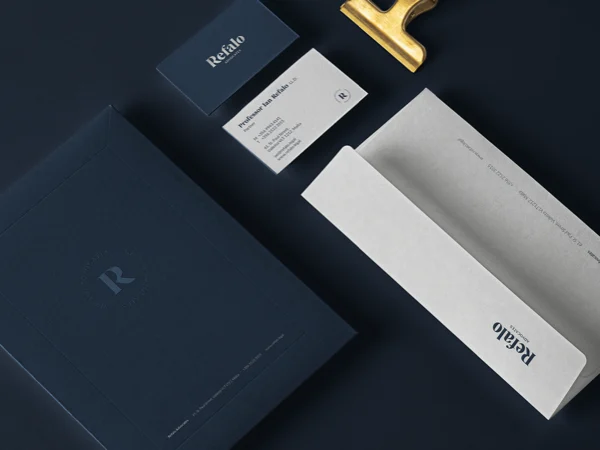
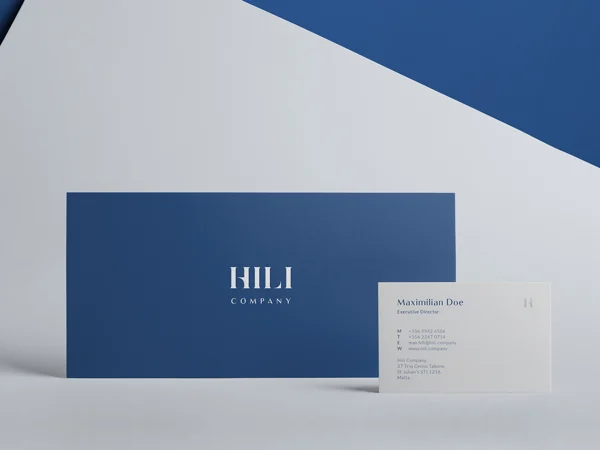
A company with an established legacy, Hili Company, partnered with us on their rebranding. The brand we created reflected their proud history with a classic and sleek portfolio B2B website that instantly communicates what the company stands for and its ethos.
AB Levant is an international tax advisory firm based in Mauritius. They entrusted us with the naming and branding of their firm. The result of which is a contemporary wordmark in contrasting colours making it stand out from many other companies in the same industry.

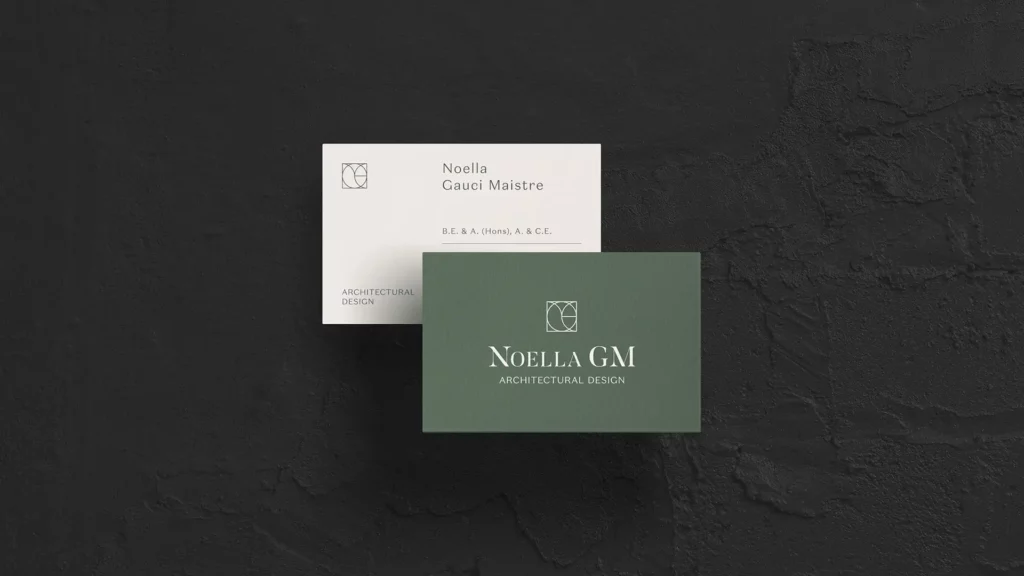
We partnered with Noella Gauci Maistre’s architectural design company to rebrand their company. The focus was to create a clean logotype which incorporated texture into the design.
Evocative
Evocative names don’t necessarily describe the product but still suggest its function or value. At times it involves using a pre-existing word and its pre-existing meaning in a new way. Take Amazon for example, named after the planet’s most diverse collection of flora and fauna.
An example of a project which we’ve worked on with an evocative name is Who’s Who. Who’s Who is a leading source of information about influential people from all walks of life. It lends to the name of the childhood game called ‘Guess Who’.
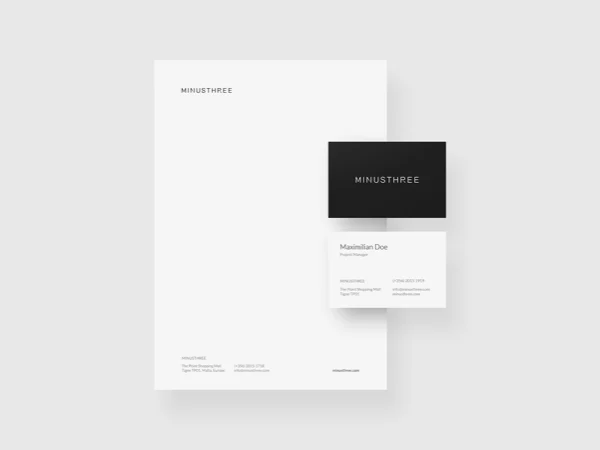
Another example is MinusThree, taking a pre-existing word with a pre-existing meaning and transforming it to encapsulate a brand.
Abstract
It may be tempting to name your business something random and out of the ordinary. However, it’s important to remember that you should use your name as an opportunity to communicate with purpose to your consumer. After all, Google did it right? Google was derived from Googol – the mathematical term for ten to the power of 100. Brand names such as TikTok, Adidas and Gisou may also seem abstract, but they’re just as deliberate. TikTok has an onomatopoeia to connote the brevity of the content on the platform, Adidas is short for Adi Dassler, and Gisou stands for women’s hair in Persian, connoting the founder’s background.
One example of an abstract name that we’ve branded is Arcarius. Arcarius stands for protector of wealth, it lends toward the founder’s Icelandic background as well as perfectly describing the business to a tee; finance. Arcarius helps entrepreneurs to monetise their investments or to develop their business by acquisition or fundraising. The combination of part of the Icelandic coat of arms, its shield with the initials of the company was inspired from the founder’s wish to incorporate Icelandic values into the company. The use of contrasting colours with copper as a primary and black as a secondary resulted in an elegant and sleek look.
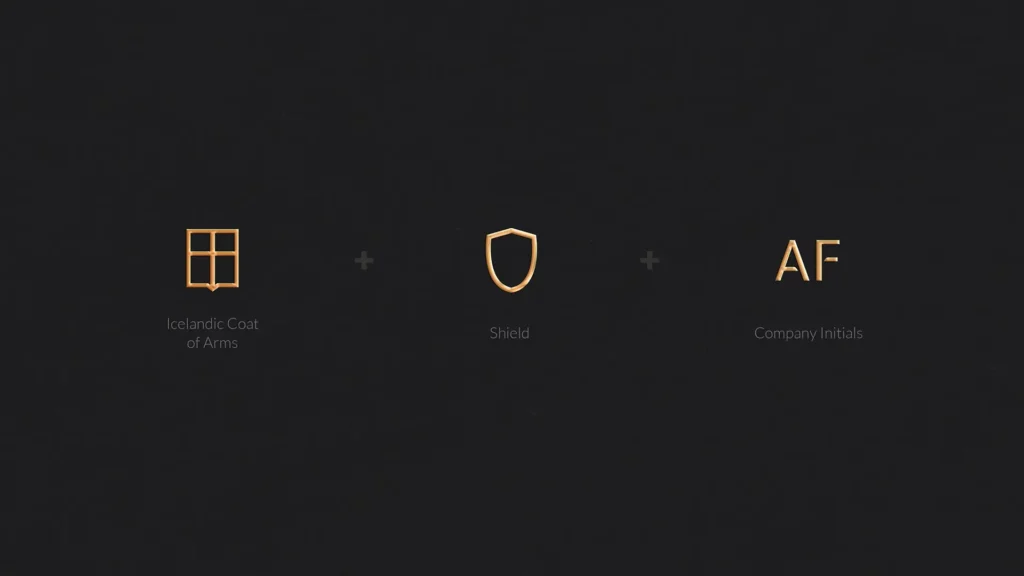
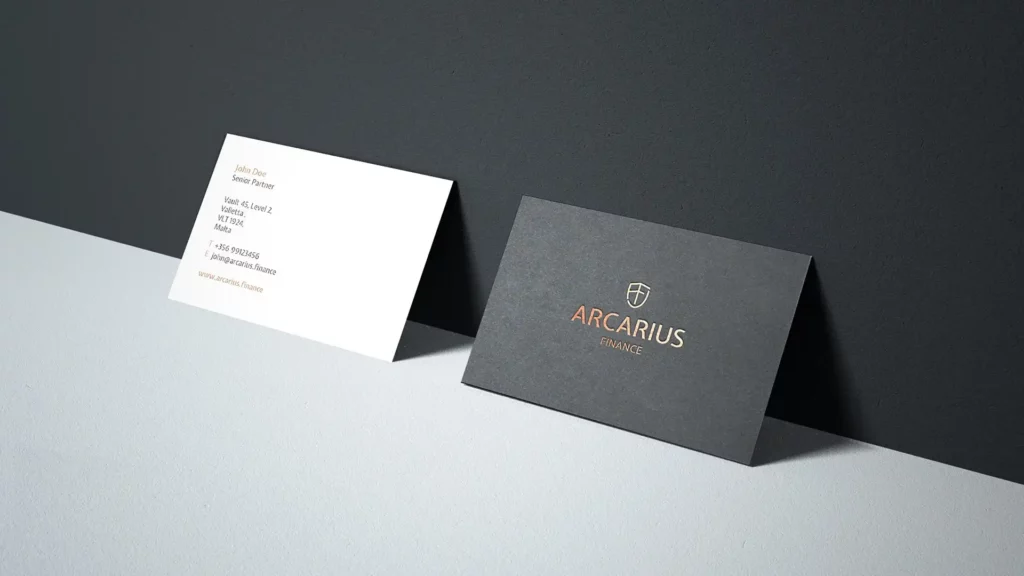
Descriptive
A descriptive name is pretty straightforward, it describes the product’s form or function. Examples of brands with descriptive names are the following; British Gas, Content House or MaltaPost. These names usually work when the value of your product is easy enough to understand and more so if you’re the first of your kind to move into a category.
The majority of businesses we’ve branded have descriptive names. Below is a list of these businesses of which we’ve had the pleasure of branding and in most cases even developing a website and/or a mobile application.
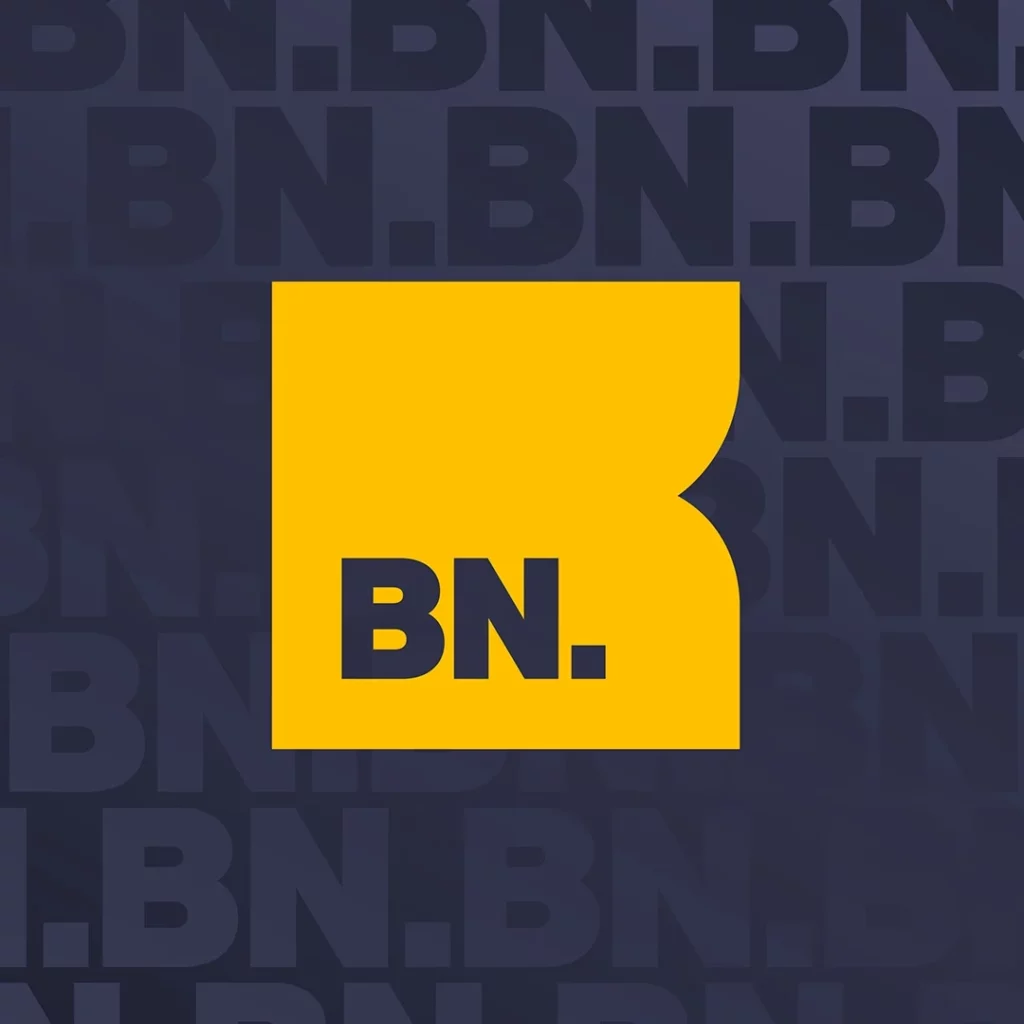
BusinessNow.mt is a news portal related to all things business. The descriptive name of this brand lends itself to the product’s description; Business Now – business at your fingertips.
iGamingCapital.mt an online portal related to all things iGaming, whose name speaks for itself. Again, this descriptive name does all the talking with conveying exactly what this website is all about.


Another example of a descriptive brand name is MaltaCEOs.mt, a website dedicated to knowing the ins and outs of all of Malta’s CEOs and businessmen and businesswomen alike.
OurWedding.mt – pretty self explanatory, this website delivers information about everything related to weddings. From love and relationship to what colours your bridesmaids should be wearing this season.

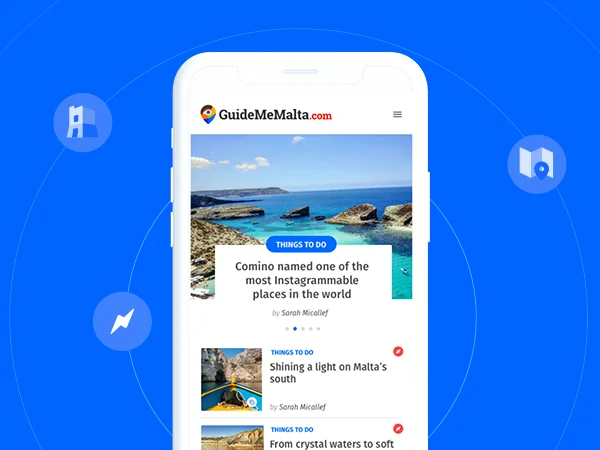
GuideMeMalta – This website and mobile application acts as a guide of Malta for tourists and locals alike, the name makes that pretty clear.
Nutrition Empire – Another descriptive name used to describe exactly what the product is; the empire of nutrition.
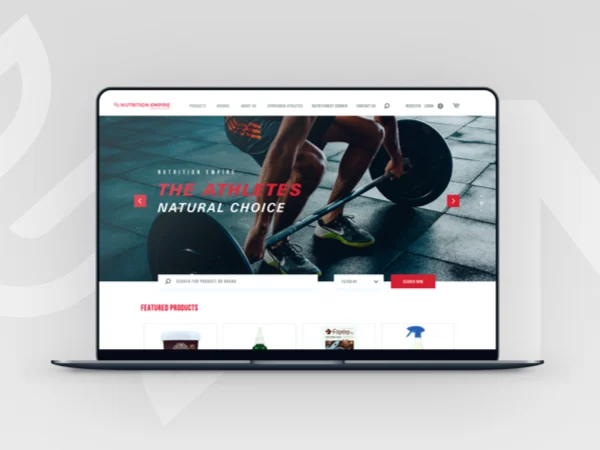
Rolex sells statuses, not watches. Supreme sells scarcity, not clothing. Harley-Davidson sells a lifestyle, not motorbikes. Apple sells simplicity and style, not electronics. Great marketing sells feelings, not products.
If you’re interested in getting a consultation about how to brand and market your digital product, you’ve scrolled through the right blog post, feel free to contact us for a consultation.




